|
Since the loss of direct WEFAX reception from Meteosat, things have never been the same for me with the hobby, although we now have Eumetcast and exceptional images, it takes away that satisfaction of direct reception. Whereas I used to really enjoy the hobby, having it on a plate now with Eumetcast seems to take away the pleasure I once had. Don’t get me wrong, I’m grateful for what we have with Eumetcast, and the excellent image quality and resolution seen like never before, but being a ham with a curious mind, I prefer the satisfaction of direct reception.
I decided that HRPT was the way to go. This article describes some of the steps and issues in setting up and using an HRPT station.
HRPT stands for High Rate Picture Transmission. APT is a derivative or by product of HRPT. APT is 4km per pixel resolution (fig 1) & HRPT is 1.1km per pixel resolution (fig 2). It’s still received from the same polar orbiting satellites that bring you your APT images e.g. NOAA’s 18 and 19.
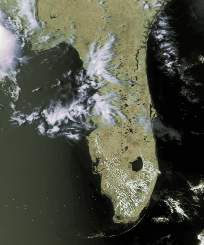 fig1
fig1
![]()
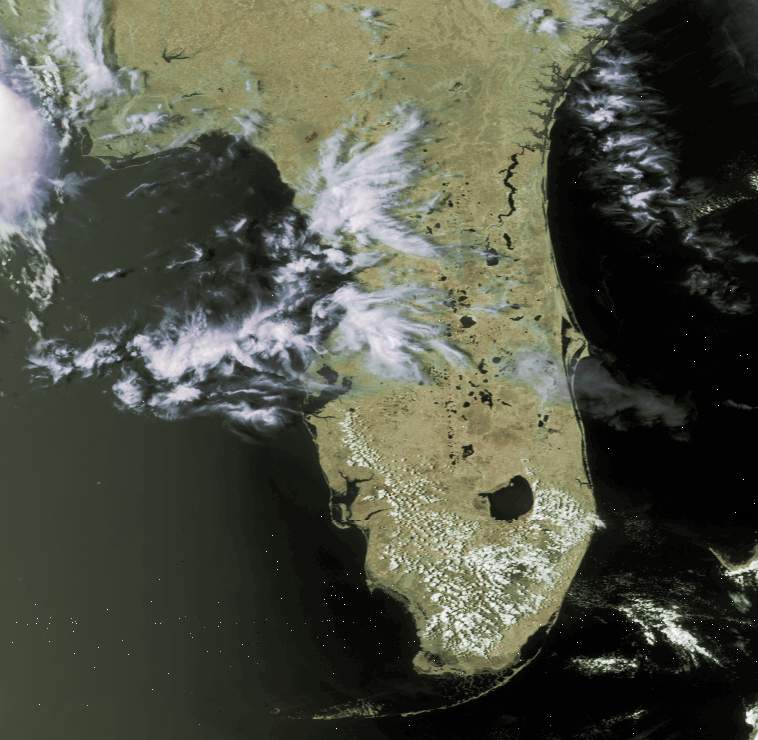 fig2
fig2
What equipment is needed?
A dedicated HRPT receiver, a normal APT receiver will NOT work, the HRPT
receiver has a wider bandwidth. Then you need the decoder, amplifier,
Downconverter, Dish and feed, Rotator and controller. It all sounds rather
complicated, but taken one step at a time, not so difficult.
Receivers
The main choice of receivers I liked were available from Nuova Elettronica, Quorum, and Dartcom. The receiver LX1495 (fig 3) I chose was from Nuova Elettronica in Italy. (no longer available).
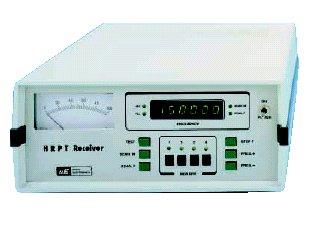 fig3
fig3 
![]() fig4
fig4
Decoders
There are several HRPT decoders on the market, but I chose the Rob Alblas design. Picture is of 2010 design. (fig4).
I chose Rob's Decoder because it looks like it meets all my requirements and it's simple to build. Yes, I said build, If you want to do this on a shoestring then it involves home construction although such items can be bought ready made, being a radio ham and having a tight budget I decided I would make what I could and save money rather than buying it ready made. It is really not as difficult as you may think, I was a little daunted at first, but step by step, it can be done. I'm not going to go through all the details of this board as it's already available on the internet at the website of Rob Alblas
Rob is a member of the Dutch Werkgroep Kunstmanen. This decoder was the first item I built towards my step of owning and using a HRPT station.
1.7GHz Amplifier
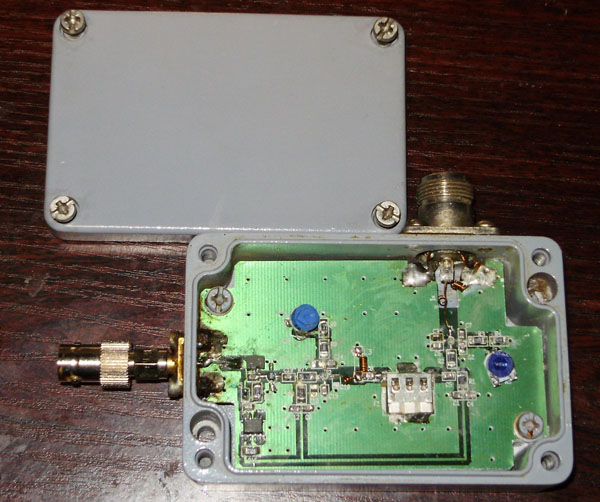
![]() fig 5
fig 5
Mine was a commercial ready made Pseudomorphic High Electron Mobility Transistor (or P-Hemt for short) purchased second hand from a fellow GEO member for the bargain price of £25, ) (fig 5&7). The amplifier is placed directly behind the helical feed in the centre of the satellite dish for maximum signal gain. The P-Hemt field effect transistor tends to give higher gain than the normal FET’s due to the way it’s made, but for the moment let’s keep things simple.
Downconverter
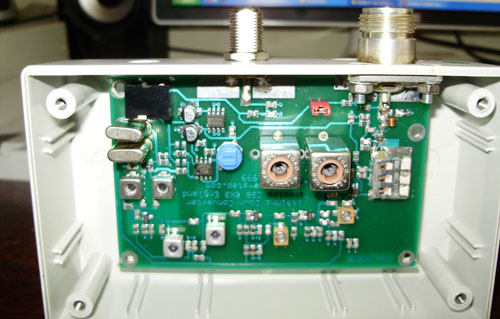
![]() fig 6
fig 6 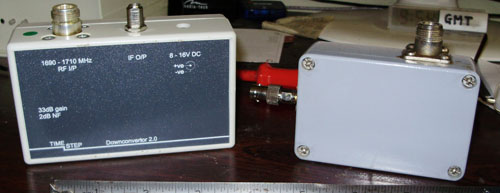
![]() fig 7
fig 7
Remember the days of WEFAX? Remember that old downconverter you had that became obsolete? (figs 6 & 7)Well, it's not any more. You can give it a new lease of life as part of your HRPT system. Used in conjunction with the NE receiver it can cover ALL the HRPT frequencies! That's going to save you a lot of money. How can it do the job I here you ask? Well, let me explain. The downconverter is broadband so it will cover from 1690-1710 MHz and the NE receiver covers from 135-155MHz and that’s how it’s done! All the frequencies you'll ever need.
Dish antenna
The most common and suitable antenna it seems for HRPT is a prime focus dish antenna. You don’t want anything too heavy for fear of overloading the rotator but yet you need something large enough to capture the signal. I decided to try and find something midway and settled on a 1.5 m prime focus dish made from Aluminium to reduce the weight and stop rust, although offset dishes have been used for such purposes, see the homepage of Gerald Ihninger. I know there are many mesh dishes about but I read that they are not as efficient as solid, I can't confirm this as I haven't done any tests. (Fig 8 & 9)
Dish Feed
The Dish feed of course must match the HRPT receiving frequency of around 1.7GHz. The signal sent is circular polarized so we need an antenna to receive such signals, which usually involves a helical feed. This again can be home made. Again, Gerald Ihninger has antenna feed specifications on his site.
Rotator/Controller
Believe it or not but this is the most expensive part of the set-up, if purchased new anyway. You can of course build your own and save money but I felt this was a bit out of my league so to speak. It seems to me that the most common antenna controller/rotator is the Yaesu 5500 which retails about £450-£500 GBP although I have had no experience whatsoever in using one. At the moment my antenna is still turned by hand! Remember, you need a an Az/El rotator for azimuth and elevation i.e. left and right as well as up and down in order to track the moving Polar satellite. (The antenna must always be pointing at the satellite) There is a way round this expensive problem. I was recently in communication with Ed Murashie from the USA and he has found a perfect solution at a lot less cost. Instead of using the Ham Radio rotator why not use a cctv one? And so it was. I decided to follow Ed's advice and settle on the Pelco brand, which is very much cheaper (starting around £100 second-hand) and also much quieter. Ed wrote an article on this for GEO so I won't cover it here. (Fig 9)
So, to sum up, if you were to ask me the way to go, try getting second-hand equipment, and don't be afraid of having a go at making some of it yourself, there are always people around willing to help. Of course if you have the money there are new commercial systems available but at a cost.
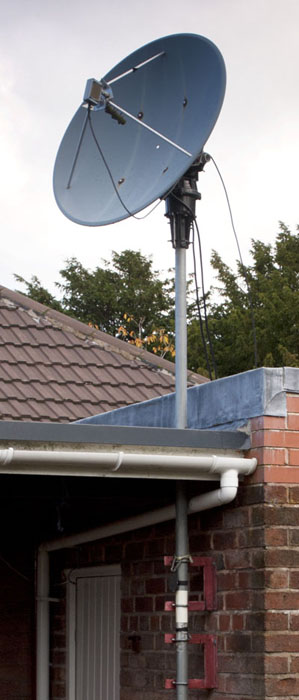
Fig 8 |
 |
Figs 8 & 9 are of Robert Moore's Dish, Antenna and Rotator. 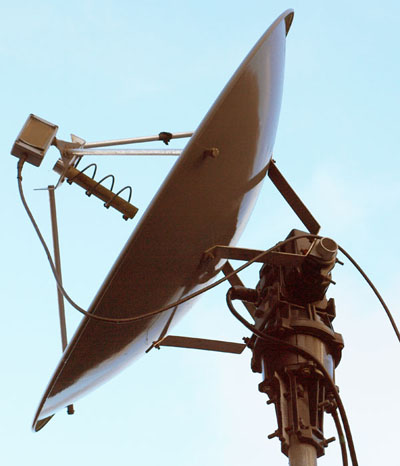
Fig 9 |
Figs1 & 2 Courtesy David Taylor
Fig4 Courtesy Rob Alblas
Fig8 & 9 Courtesy Robert Moore
others: Rob Denton
Top
